So, you have been working on your brand for some time now. Competitors know you. Consumers know you. Do you think that’s enough?
Unfortunately, it’s not. Brands come and go. To stay alive for the long haul, you need to build trust on social media.
A global survey conducted by PwC found that trust in a brand strongly influences where consumers decide to shop. 35% of respondents said ‘trust in brand’ was among the top three reasons influencing their decision to shop at a particular retailer, while 14% said brand trust was their main influence after price.
Moreover, the same study’s results also suggest that opinions on social media, posted by friends and strangers alike, have more influence on purchase decisions than factors within the control of retailers – like advertising and pricing.
Evidently, social media is the place to build trust. To help you cultivate a brand that goes the distance, here are ten ways to build brand trust on social media.
1. Share High-Quality Content
Assuming you already have your social media platforms all set up, the first thing you need to do is provide quality content that is of value to your visitors. This impacts how long visitors stay on your website and how much they engage with you on social media. It also helps establish a loyal following which keeps them coming back for more.
Posting great content shows your brand is an authority and is about more than just making money. That is the base to start off when you want to build audience’s trust in social media.
To become an authority in your industry and provide content that will be appealing to your target audience, you should:
- Identify who your customers are, what they want, and why they want it
- Identify your competitors, what they say in their content, and what their content lacks
- Provide better content by filling the gaps left by competitors and aligning your content to consumers’ needs.
Though you’ll always hope to convert a few followers with your content, never make your content all about selling your product or services. A good practice to follow is the 80/20 rule – i.e. 80% of your content should be informative and non-promotional, while the other 20% can talk about your brand or product.
This can apply to your overall content plan, the structure of a blog post or your social media posts. If you share four interesting, engaging tweets that are of value to your audience, when they see a fifth one that is more promotional, they’ll be less likely to get annoyed or dismiss it as spam. Your followers will be more likely to take notice and engage.
If you can establish your brand as a thought leader, you may become a go-to resource. This should build up a strong following on social media and, hopefully, lead to more opportunities to strengthen your position. While followers with an interest in your content may not necessarily be customers, your brand is sure to be at the fore of their minds if they ever need what your company provides.
By not pushing your product too much, social media users will stay to listen, trust your brand and be more receptive to promotional content when you do share some.
2. Nurture Interaction on Your Social Channels
The point of social media is just that: socializing. You can’t throw your content out there and leave it at that.
You must engage, respond to questions quickly, encourage interactions, and thank customers who are talking about you using some free social media management tools. The more you interact, the more people will reach out.
Building a reputation as a brand that is available and answerable to its audience will mean people will be more confident when it comes to using your products or services. Doing these things helps you build a reputation of trust and, eventually, a community around your brand.
3. Encourage User-Generated Content
Take interaction to the next level by encouraging customers to share their photos and videos of your products on social media. Today, consumers want to see real people using a product before they buy – and UGC allows marketers to share this information through their social media accounts in order to build social media trust. UGC brings real consumers into the fold. This will make your authenticity ratings soar, while customers will be delighted to see their content shared or retweeted.
And the data concurs! Consumers are twice as likely to share user-generated content. This means your brand can get twice the amount of exposure. Research from Facebook also found that ads with UGC have a click-through rate three times higher than other ads. This and other statistics suggest the same: UGC is influential.
Puma does it with its #ForeverFaster hashtag on Instagram.
Toyota did it with its Feeling the Street campaign on Facebook.
And Starbucks does it all the time:
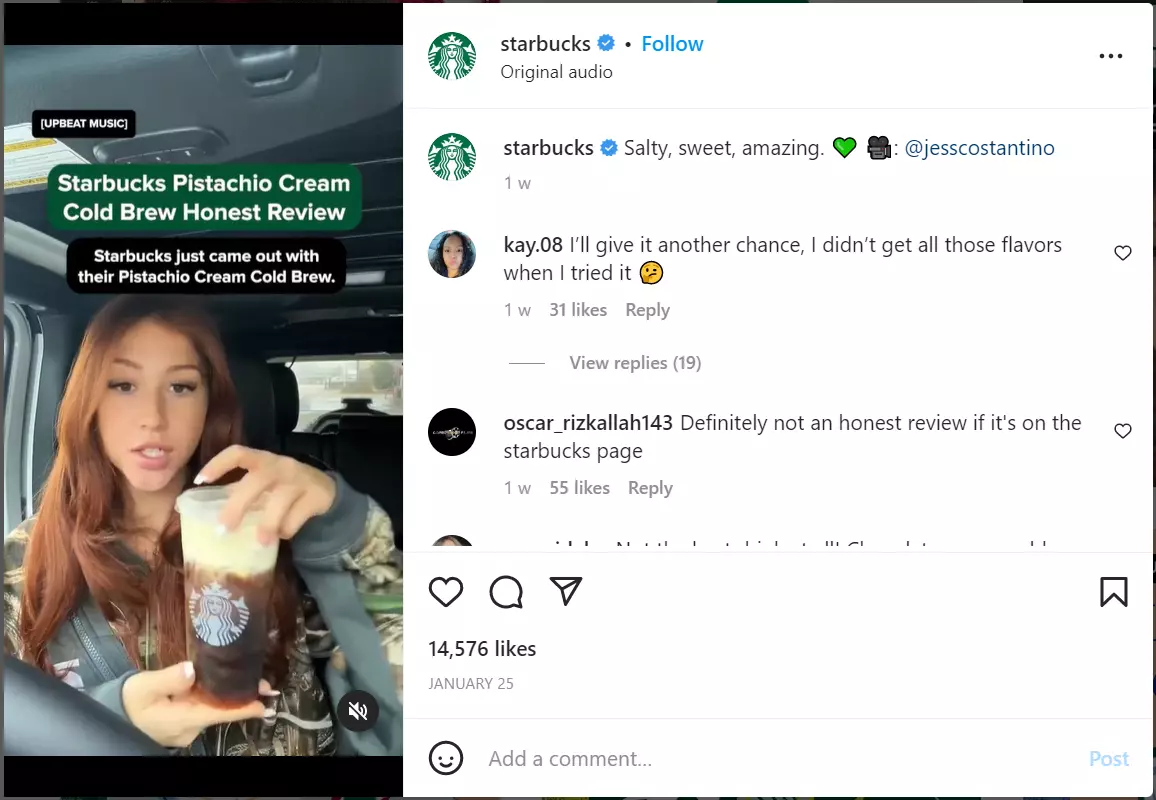
One particularly successful UGC campaign at Loews Hotel used photos shared by guests on Instagram to promote their destinations. Its #WelcomingYouLikeFamily campaign cost-effectively engaged with prospective guests by giving them an authentic understanding of what a stay at the hotel is like. The proof was in the photos taken by real guests. The campaign was a major success and still thrives now.

4. Ask Customers to Review Your Company
Reviews are essential for building trust in your brand. Many consumers will check out a company’s reviews on sites like Yelp, Google Business Profile, and ratings on Facebook before buying. In fact, Facebook, even being a social media platform, has a dedicated page review section that rates a page out of 5 based on whether visitors would recommend it or not. People can also elaborate on their opinion by leaving a review.
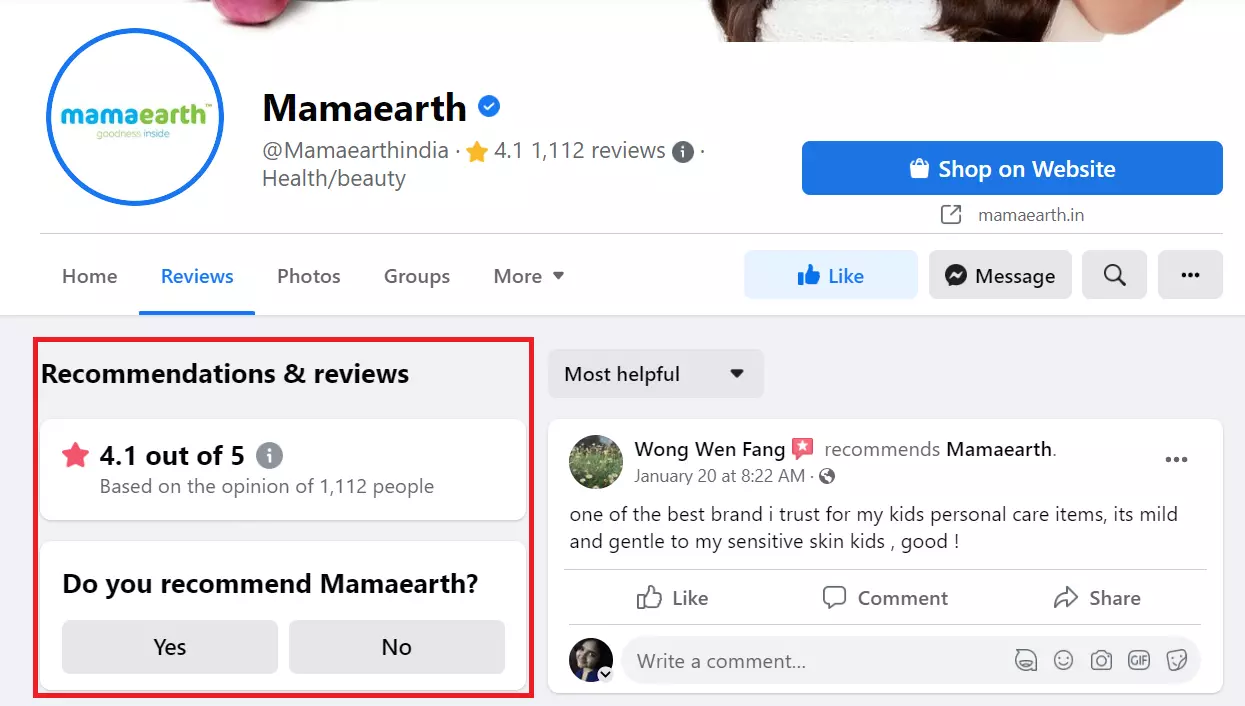
Isn’t this the first thing they’ll see when checking out a company online? If they can see at a glance that you’re close to a 5-star rating, they’ll convert quickly.
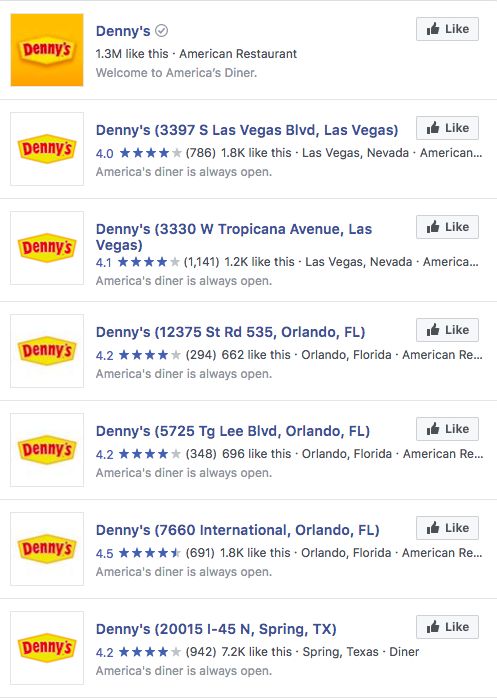
You should encourage your customers to leave reviews and share them on your social channels so that prospective customers will feel reassured and convert when they check out what people are saying about your brand.
Reviews can highlight the quality of your brand, as well as personal experiences people have had with your support team, staff, and the product or service itself. Like UGC, building up favorable reviews can promote a reputation of trust.
Even bad reviews can be turned into something positive for your company if you are proactive about responding to them. If you’re responding to negative feedback constructively and quickly, this testifies to your brand’s reliability and transparency. Very few customers expect your company to be perfect, but if they see you positively respond to a negative review, they’ll feel better about doing business with you.
So make sure when customers take their time out to leave feedback for your brand online, you take it into account and respond as soon as possible.
Responding to Facebook reviews for multiple client pages at the same time can be grueling and nearly impossible without missing out on replying to some of them.
SocialPilot can help you with this conundrum. It has a dedicated inbox feature from which you can access all the Facebook reviews, comments, and messages. Switch from page to page easily in the same dashboard to monitor audience reviews and improve them by replying in the shortest time. This will help you build a stellar brand image online!

5. Use Trustworthy Links in Your Posts
Links are the connection between your brand and the online world. Whether you’ve used content curation tools to find trending articles or are sharing industry news, it’s important that your links lead to reputable sites.
Link to industry favorites when sharing curated content and use a custom link shortener for social media, so readers know what it is that they’re clicking through to.
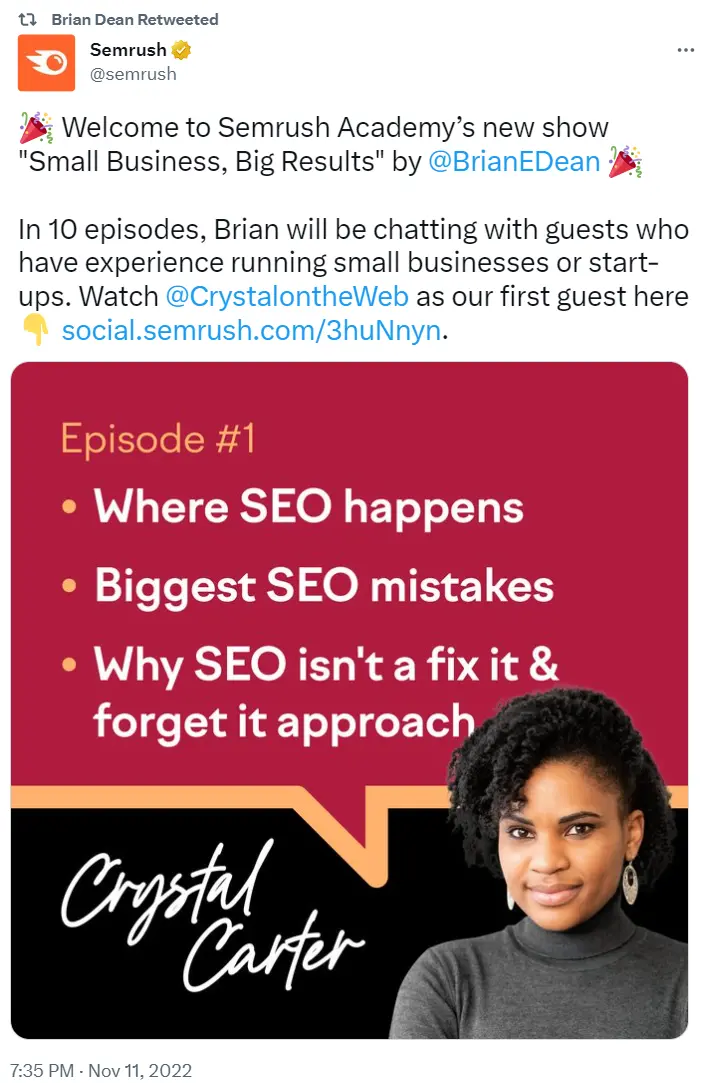
Custom short links are made up of a custom domain name and a keyword after the slash. So when users see your brand’s name associated with the content you share, they know it won’t lead to spam or phishing sites. The keyword also gives an indication of what the link will lead them to. This extra communication and trust can boost click-through rates by 39%.
6. Provide an Insider’s View
Offering your customers a behind-the-scenes look at your brand on social media takes us back to the idea of transparency. It shows you have nothing to hide. But exclusive sneak peeks can also lure consumers in and make them feel special.

Providing an inside view can really show off your brand’s personality and values too. Whether it’s a snap of the chef in the kitchen or a video backstage at a fashion show, people will get to see past your logo to the passionate community behind your brand.
Followers will feel more familiar with your brand and will trust you because you trusted them with the inside scoop. Plus, the FOMO effect of exclusive content can send your engagement rates through the roof.
7. Make Sure Your Branding Is Consistent
Staying on message is extremely important for any brand that wants to inspire trust in its followers. Don’t deny you care about something if your actions don’t fit with this.
When it was revealed that Volkswagen had deceived customers and government agencies about its vehicle emissions, this was completely at odds with the environmentally-conscious image it was trying to build.
Needless to say, the brand was badly damaged. This is an extreme example but don’t ever forget social media’s power to quickly go viral. So make sure your brand voice and personality match up with your company’s actions and content on social media.
So if you say you care about the environment, don’t just say it, show it.
On another level, keeping the appearance of your logo, brand colors, and other design elements consistent can also help inspire trust and build a professional, reliable image for your company.
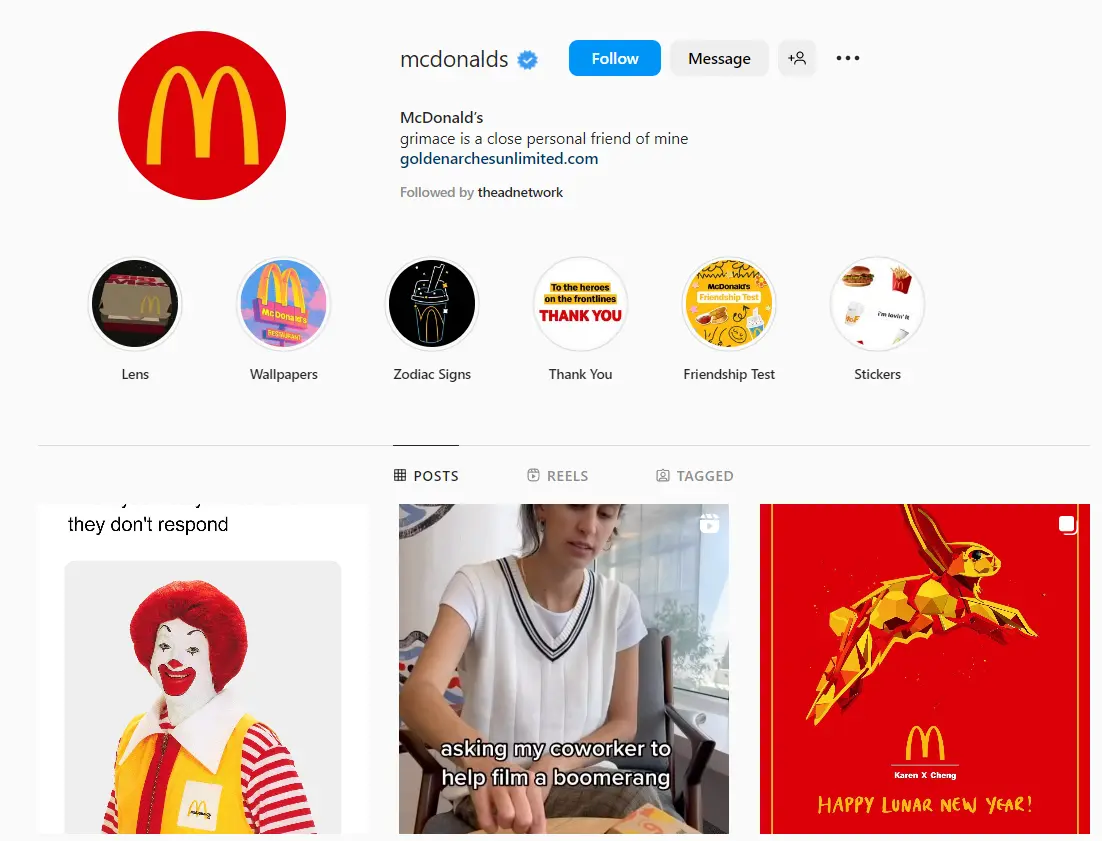
Managing multiple social media profiles for different brands can be time-consuming and cumbersome, especially when adding brand-specific logos to each post. But fret not! SocialPilot’s watermark feature offers a solution. Users can easily set up custom watermarks for each social media account, ensuring that every image post published bears the respective brand’s watermark. This automation saves time and effort, while maintaining uniformity in branding.

8. Stream Events Live
Live video is a great way to boost engagement on social media and capitalize on consumers’ questions, wants, and needs. Live video events encourage interaction and bring brands face-to-face with their followers.
Live video promotions can help humanize your brand and viewers seeing you answer questions in real-time will definitely inspire trust.

Hosting live, unscripted events shows your company has nothing to hide. And if you want to inspire trust among audiences who are becoming more and more immune to polished promotional material, this is the perfect way to do it.
There are no editing tricks, second takes or over-the-top productions. In an online world of highly curated and carefully chosen content, this is a breath of fresh air that can make brands feel more honest and authentic.
9. Share Your Social Values
Today, people want to know that the companies they support care! And if your brand is about more than just profits, this will send the trust in it skyrocketing. Use your social media accounts to raise awareness of causes close to your company and highlight any socially responsible actions your brand is taking.
Make-up brand, Kat Von D Beauty, is a great example of this. Its products are made of vegan ingredients which haven’t been tested on animals. This social value is often highlighted across its social channels with posts about animal rights, cute animal photos and the hashtag: #crueltyfreebeauty.
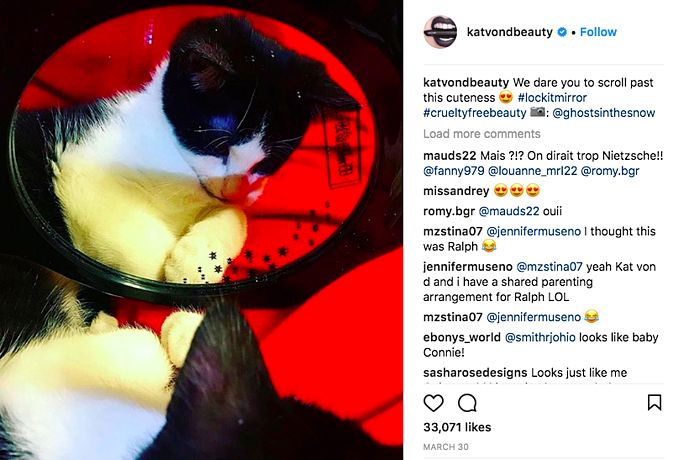
In 2016, Starbucks did a campaign that underscored the importance of social responsibility as a means to encourage trust. It held a Facebook Live event in New York for National Voter Registration Day. Prior to the event, Starbucks asked its customers to send in questions for the CEO and the rapper Common.
After both spoke at the event, highlighting the importance of voting, they answered the questions. It was a successful event that incorporated social media interaction, live video, and social responsibility.
10. Get Others to Advocate for Your Brand
While user reviews are hugely beneficial, it’s worthwhile promoting any other hat tips that come your way on social media.
Engage with other trusted brands and influencers. Retweet mentions of your company from other brands and shares any media coverage you’ve received across your social channels.
Aligning yourself with other trusted brands and publications will help build your reputation. Help this process along by working with brands in your industry. Create an ebook together, exchange content, or co-host an event – and then, of course, promote it on social media. Your content will have twice the reach with just half the effort.

Influencers can do a lot for your brand too, so send your products out to some relevant ones, invite them to an event or enlist the help of an agency.
The influencers you work with will depend on the size of your company, your industry and your goals. But make sure they have a high engagement rate as this is an indicator of how much followers trust their word. You want your brand to be recommended by a trusted source, rather than someone with just a broad reach.
In a Nutshell
If you’re building a brand, social media is definitely going to be part of the equation. But beyond doing the duty of responding to customers and driving traffic to your site, think how it can work for your brand in the long-term.
People’s trust in your brand will propel your company forward and help you stay there by building a following that will benefit your bottom line long into the future.



